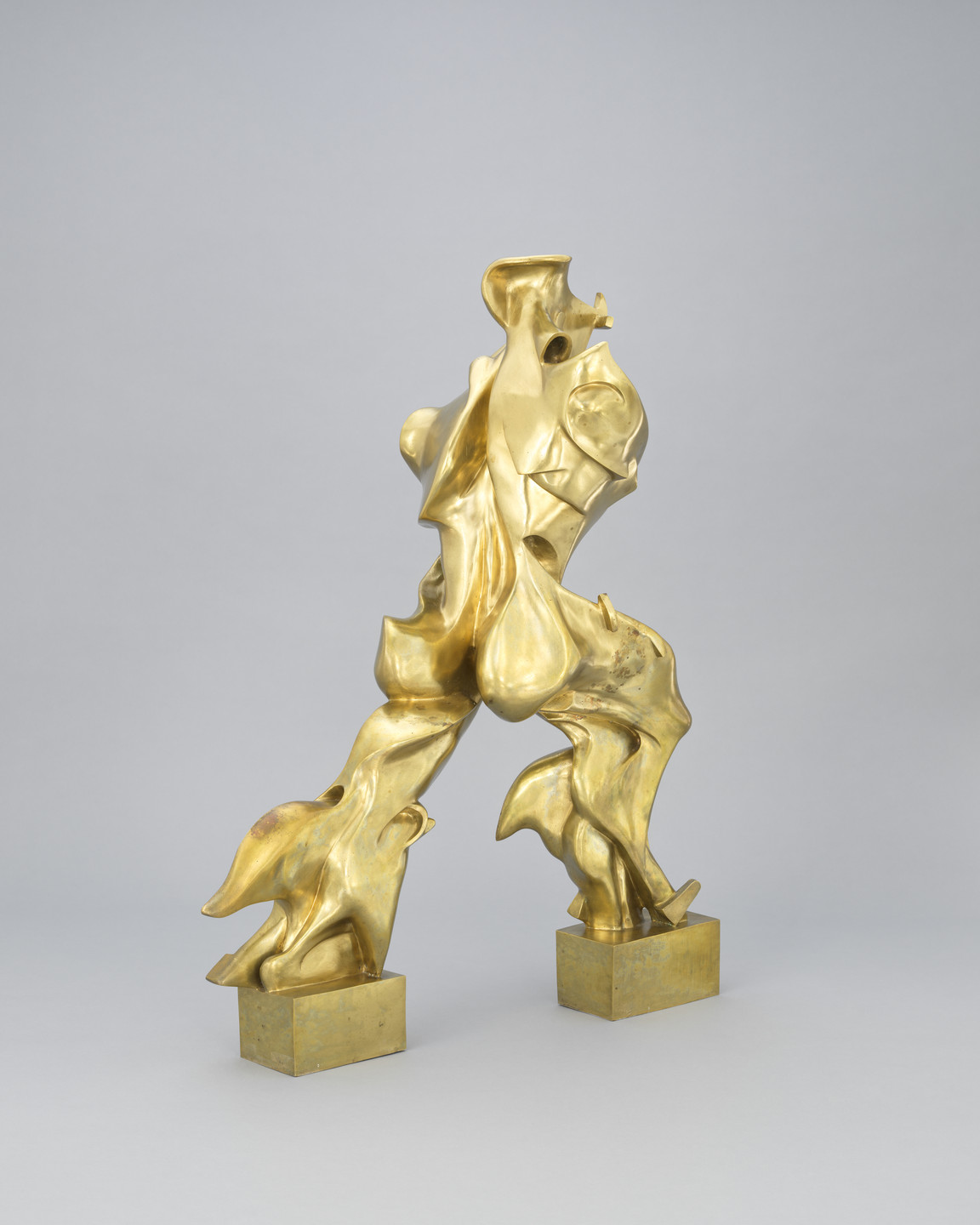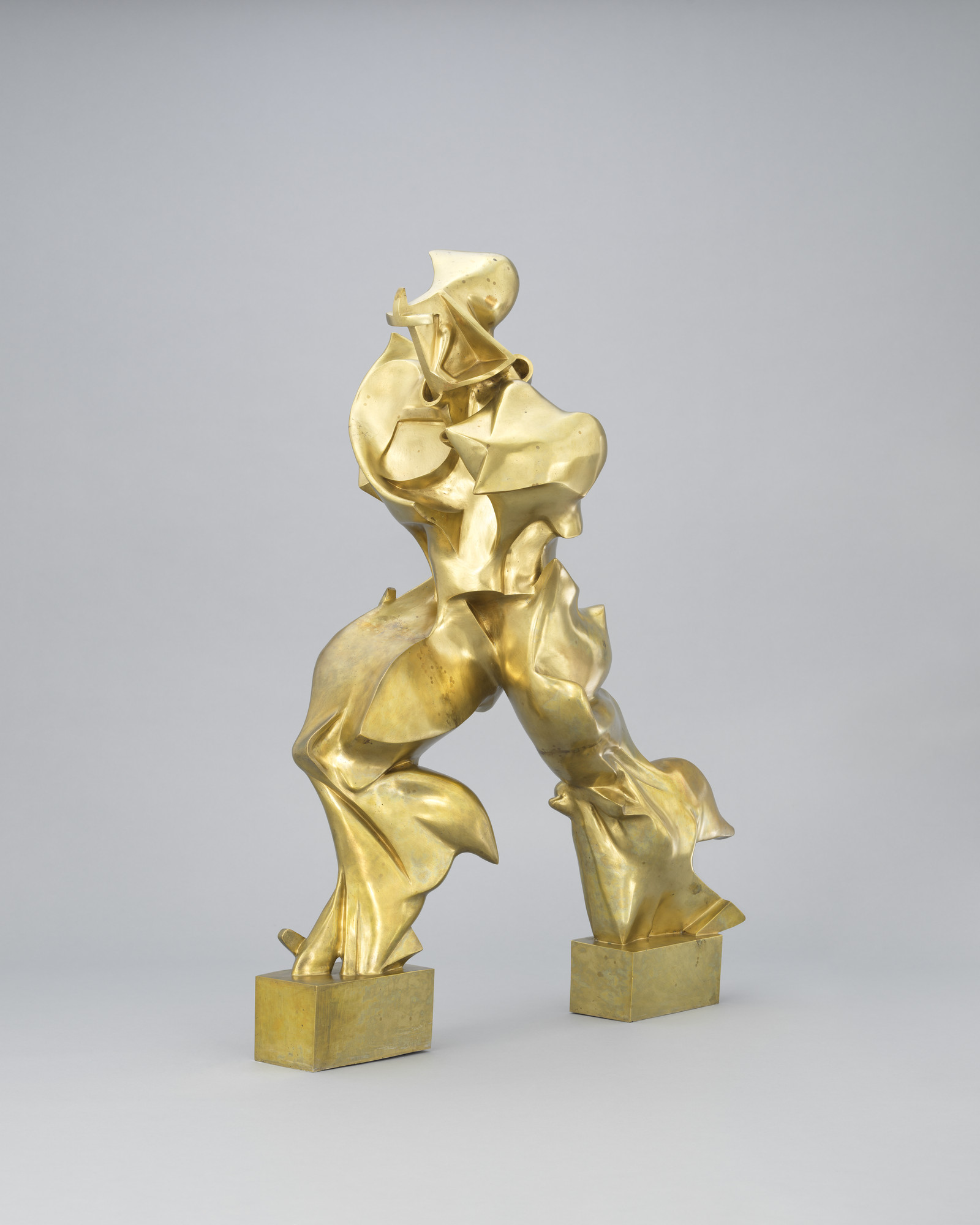Boccioni professed no love for classical or Renaissance sculpture. In Unique Forms of Continuity in Space the figure is aerodynamically deformed by speed.

Umberto Boccioni Italian Painter Britannica
Unique Forms of Continuity in Space.

Boccioni′s unique forms of continuity in space is an example of what art movement. 20-12 illustrates the principles of _____ Analytic Cubism Picasso and Braque co-founded ________ in 1910. Boccionis Unique Forms of Continuity in Space in terms of modernity and urban life. The figure doesnt appear to have arms though wing-like forms seem to.
For some Unique Forms of Continuity in Space shows a figure striding into the future. Although Boccioni was a painter first and foremost his brief forays into sculpture are significant. The futurist movement was founded by writers and artists like Umberto Boccioni who enthused about new inventions such as cars and electricity.
Expressionism This movement happened simultaneously in Zurich Berlin Paris and New York and it championed senselessness noise. It gave him the freedom to work the way he wanted. Other articles where Unique Forms of Continuity in Space is discussed.
Boccionis methods used the most adaptable material at the time - plaster. A figure in constant motion immersed in space engaged with the forces acting upon it. Umberto Boccionis Unique forms of Continuity in Space Fig.
Boccionis Unique Forms of Continuity in Space represents a striding human figure as the Futurists imagined it would be in the light of contemporary science. Boccionis brainwave was to break down blocks of movement and convert them into curves that extended past the shape of a human body before reassembling them as a forward-marching figure. How does each artist differ in his relationship to issues of technology and to the traditions of art.
It was derived from Marinettis manifesto. Identify the movements with which these artists are associated. Boccioni made the plaster sculpture in 1913 with the bronze examples seen in museums being cast from the plaster sculpture or from other bronze castings.
Boccionis artistic work started with painting and drawing and these led onto his great works of sculpture. The bronze castings of Unique Forms of Continuity in Space were made 30 years after his death. Boccioni exaggerated the bodys dynamism so that it embodied the urge towards progress.
Umberto Boccioni Unique Forms of Continuity in Space 1913 cast 1931 bronze 1112 x 885 x 40 cm The Museum of Modern Art New York The face of the sculpture is abstracted into a cross suggesting a helmet an appropriate reference for the war-hungry Futurists. An icon of Modernism Umberto Boccionis Unique Forms of Continuity in Space stands not only as the culmination of the artists pioneering form of Futurist sculpture but also serves as a powerful visual embodiment of the Futurists iconoclastic and revolutionary artistic aims. The work is a part of the short lived but influential futurist movement.
Umberto Boccioni Unique Forms of Continuity in Space. The artists of this movement believed that through color and line alone works of art could express the feelings and emotions of the artist directly to the viewer. The Futurists wanted art to break from the Classical and Renaissance styles still dominant in Italy at the start of the Twentieth Century.
Futurism was the foundation for Boccioni and his counterparts to work. Sculpture must give life to objects by extending them in space and making them palpable systematic and plastic. In the early years of the twentieth century industrialisation swept across Italy.
The figures marching silhouette appears deformed by wind and. In Unique Forms of Continuity in Space and Head House Light 1911 he carried out his theories that the sculptor should model objects as they interact with their environment thus revealing the dynamic essence of reality. Unique Forms of Continuity in Space is a famous large bronze sculpture by Italian futurist artist Umberto Boccioni.
The speed and fluidity of movement - what Boccioni called a synthetic continuity - is brilliantly captured in this bronze piece with the human figure gliding through space almost as if man himself is. A field of energy interacting with everything around it. For Boccioni one of the key figures in the Italian Futurist movement this was an ideal form.
Consider Duchamps Fountain and Boccionis Unique Forms of Continuity in Space. As the artist himself stated Unique Forms of Continuity in Space was a synthetic continuity. The Futurists celebration of the fast pace and mechanical power of the modern world is emphasized here in the sculptures dynamism and energy.
Boccionis Unique Forms of Continuity in Space figure 1 was created in Italy at the height of Futurism. Boccionis Unique Forms of Continuity in Space a sculpture depicting an abstracted quasi-human form in motion was considered at the time of its making to represent the height of achievement when it came to depicting movement through the plastic arts. As Futurisms leading art theorist Boccioni considered the work of other Modernist artists to be mired in what he called analytical discontinuity.

Unique Forms Of Continuity In Space Photographic Print Umberto Boccioni Art Com In 2021 Futurism Art Umberto Boccioni Art Terms

Umberto Boccioni Unique Forms Of Continuity In Space 1913 Cast 1931 Or 1934 Moma

All You Need To Know About Boccioni S Unique Forms Of Continuity In Space Widewalls

Umberto Boccioni Unique Forms Of Continuity In Space 1913 Cast 1931 Or 1934 Moma

Umberto Boccioni Unique Forms Of Continuity In Space Article Khan Academy

Umberto Boccioni Unique Forms Of Continuity In Space 1913 Cast 1931 Or 1934 Moma

Futurism By Richard Humphreys 1999 Books Boots

Umberto Boccioni Unique Forms Of Continuity In Space Smarthistory

All You Need To Know About Boccioni S Unique Forms Of Continuity In Space Widewalls
0 comments:
Post a Comment